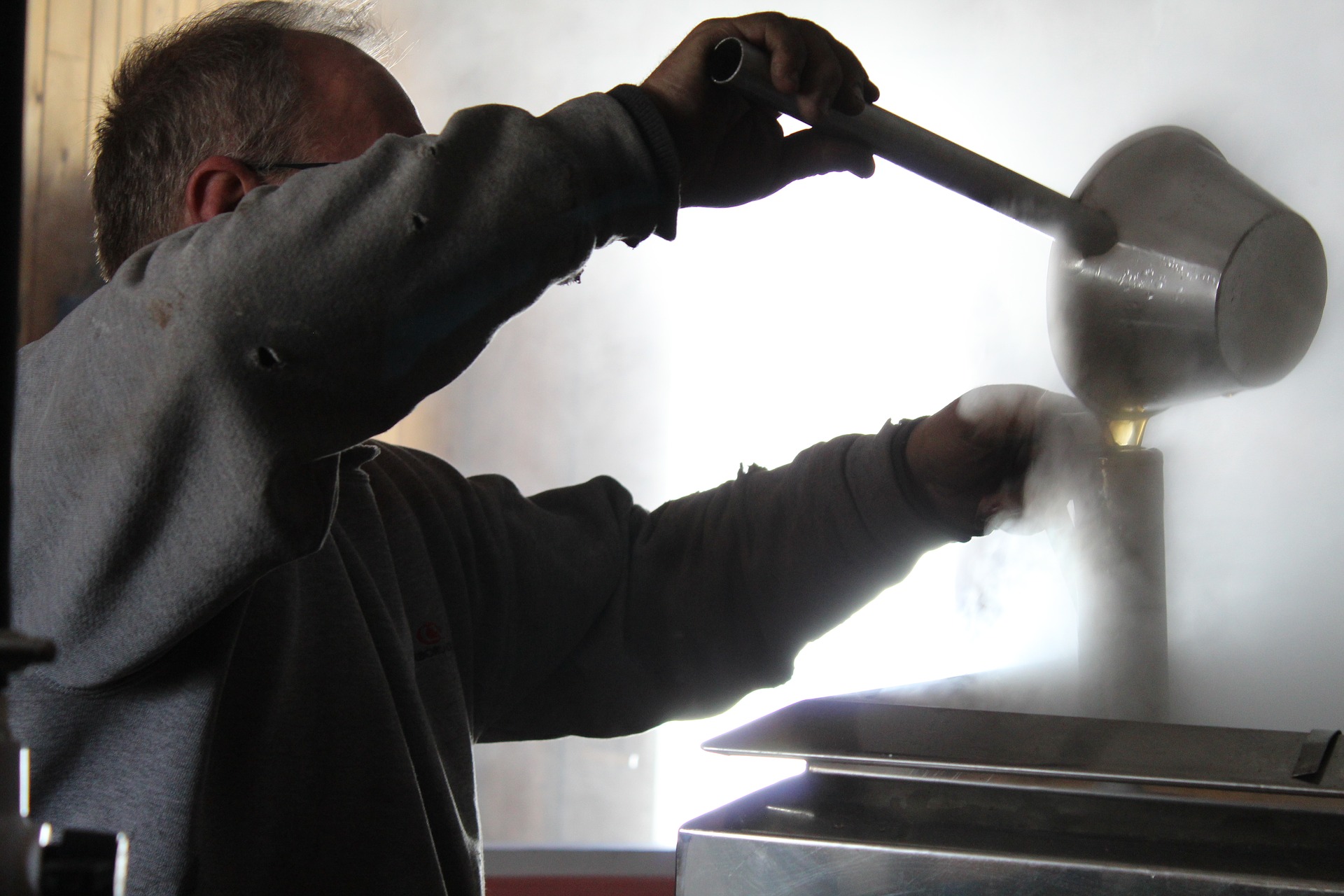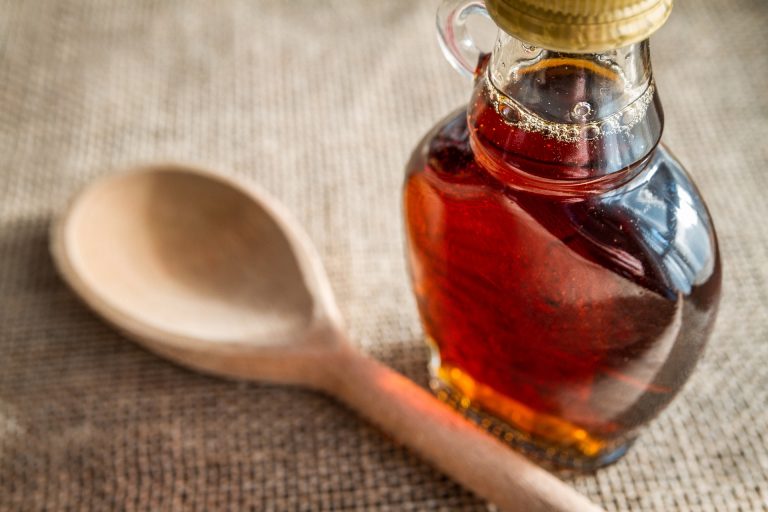Native American oral tradition has it that maple syrup was an accidental discovery. While hunting, an Iroquois Indian Chief stuck his axe on a maple tree, causing a clear liquid flow out. Since he needed water to make dinner and the river was several steps away, he decided to collect the dripping liquid and use it as a substitute. The particularly tasty flavor of the meal resulted in the Native Americans making maple sap part of their diet, leading eventually to the iconic natural sweetener we know and love: Canadian maple syrup.
The centuries-old process of turning sap into syrup initially involved stone and wooden tools. The natives would boil the sap in a hollowed out log with hot rocks underneath, patiently waiting for the water to be reduced to the sweet amber-colored thick substance. This process could take from hours to days.

Forty litres of sap are needed to make one litre of maple syrup. “It’s a lot of work,” said Susan Denholm, a naturalist at the Aldo Leopold Nature Center in Monona, about maple syrup production. Nevertheless, the significant amount of craftsmanship and patience required to produce the “amber gold,” is probably one of the reasons why its traditional production technique has been passed down through generations and become a staple component of North American culture.
71% of this precious sweet commodity is produced in Canada with 91% originating from Quebec. USA also participates in its production with 3.42 million gallons of maple syrup produced in 2021.
The global demand for maple syrup has naturally turned its production into a profitable business. While technology has optimized the process, experts fear that the syrup bonanza will come to an end, as a key factor of sap production has been overlooked: the delicate freeze and thaw cycles of maple trees and its possible disruption due to climate change.
Success
You are now signed up for our newsletter
Success
Check your email to complete sign up
Centuries ago, Native Americans discovered that if a warm day of spring follows a cold night, maple sap will flow abundantly. Science explains that these trees function like pumps, sucking in moisture during the cold nights and releasing it when the warmth of a new day comes. Moreover, the sugar content of the sap comes from the carbohydrates that the tree stores to survive the low winter temperatures. A change in the temperature and length of the seasons can result in the trees producing less sap as well as a lower sugar content.

Scientists are unanimous in deeming the current industrial agricultural model as the root cause of the issue. The use of pesticides and herbicides, the practice of monocultures and the selective removal of other tree species, have affected not only the health and growth of forests but also the duration of tapping seasons and sap’s quality and quantity.
The fear of losing a crucial aspect of their cultural identity weighs heavily on Canadians. In the face of global warming, experts are determined to look for solutions. Christian Messier, a professor of forestry at the Université du Québec en Outaouais, suggested that Canadian producers should plant maple tree seeds from New York in Quebec and Ontario. He affirms that these seeds would have the genes to better endure the warmer temperatures. “People say, ‘Let nature be,’ but we have already changed our natural environment. We need to start adapting our forests.”
However, the protection of maple trees is not a priority for all. The high costs of adopting sustainable harvest practices discourages small businesses from joining the environmental movement.
It is common among Canadians to prefer locally-made products. This characteristic stems from a deep appreciation for artisanship and their empathy towards courageous entrepreneurs with small businesses. Despite having industrially-produced maple syrup readily available in their supermarkets, most Canadians still prefer to stick to their sugar shack traditions at the beginning of each spring, when rustic cabins open their doors to offer locally harvested maple syrup.

Ancient Chinese Culture emphasized the harmonious coexistence of human beings and nature. According to written records dating back to four thousand years, the Chinese attached great importance to respecting the natural equilibrium of things. In his classic books, Confucious noted that everything in nature nurtures everything else without causing any harm.
In respecting the delicate cycles of nature, in particular, that of the maple tree; our modern society could benefit from a thoughtful look into the past. By realizing that we are also a component of nature and understanding how previous civilizations developed in harmony with the Universe, we will be able to preserve not only the environment that ensures our survival but also deep-rooted traditions that may bring joy to our tables.







